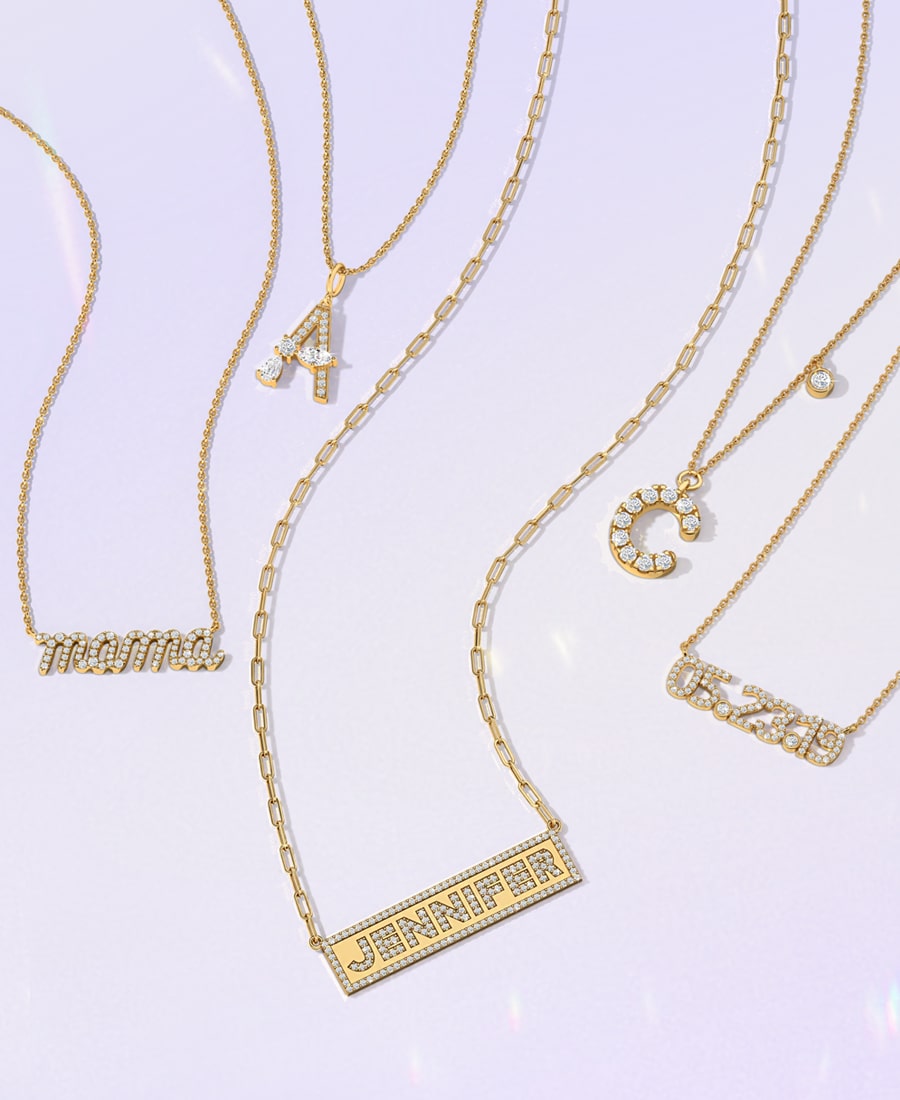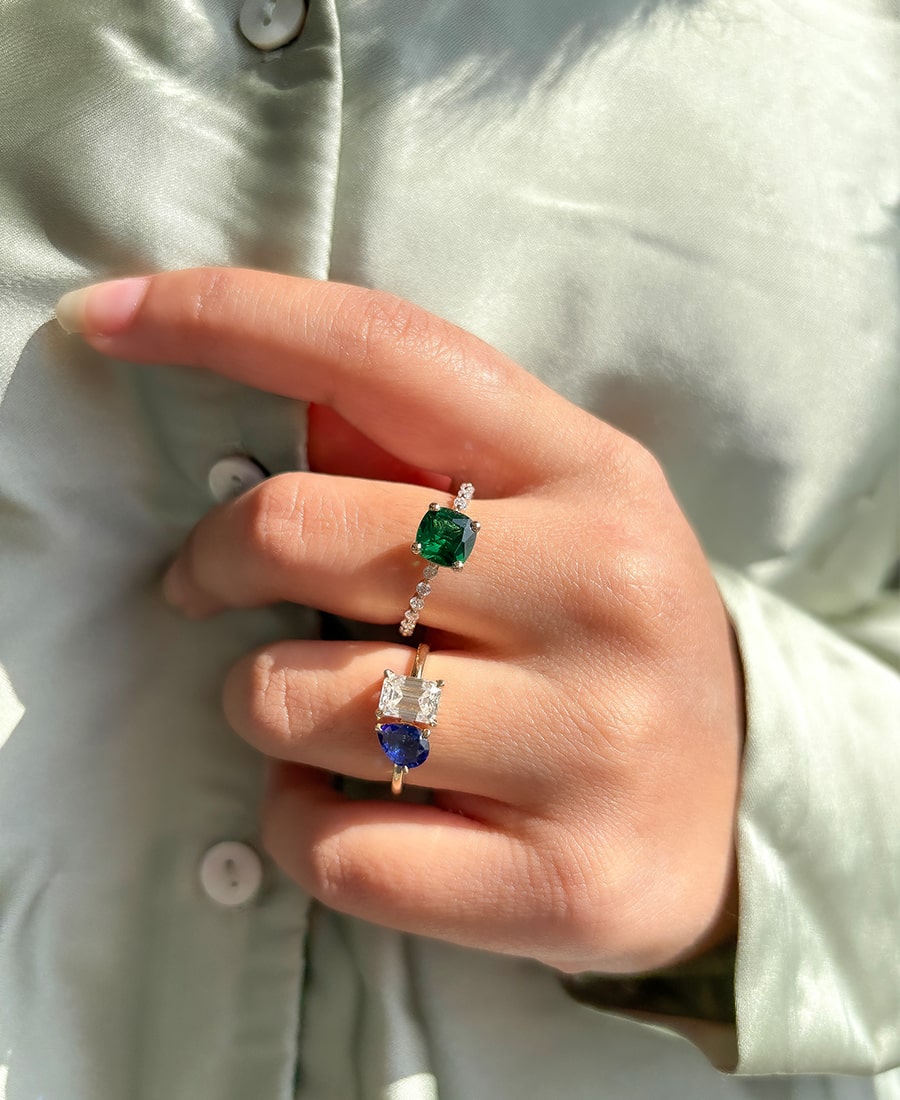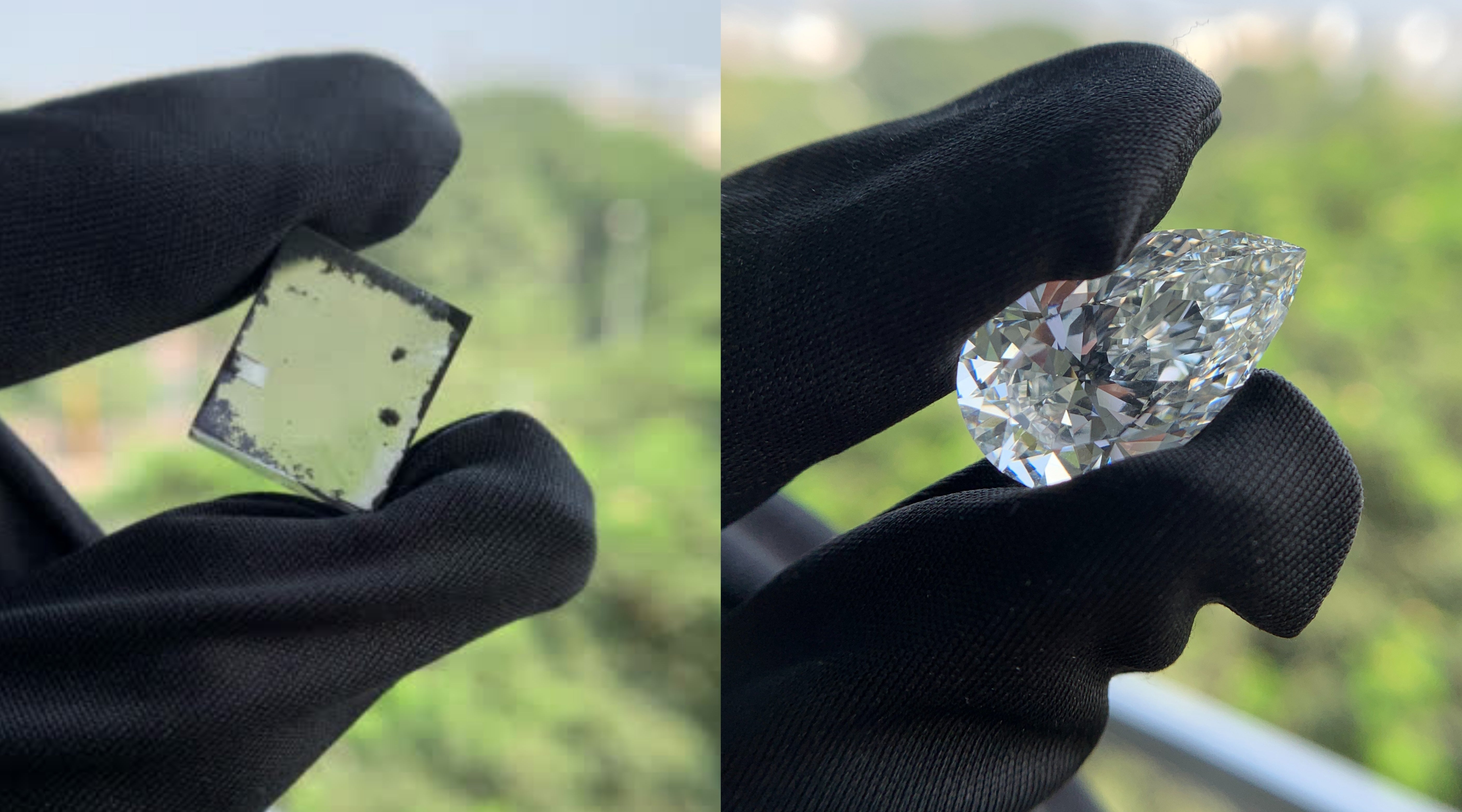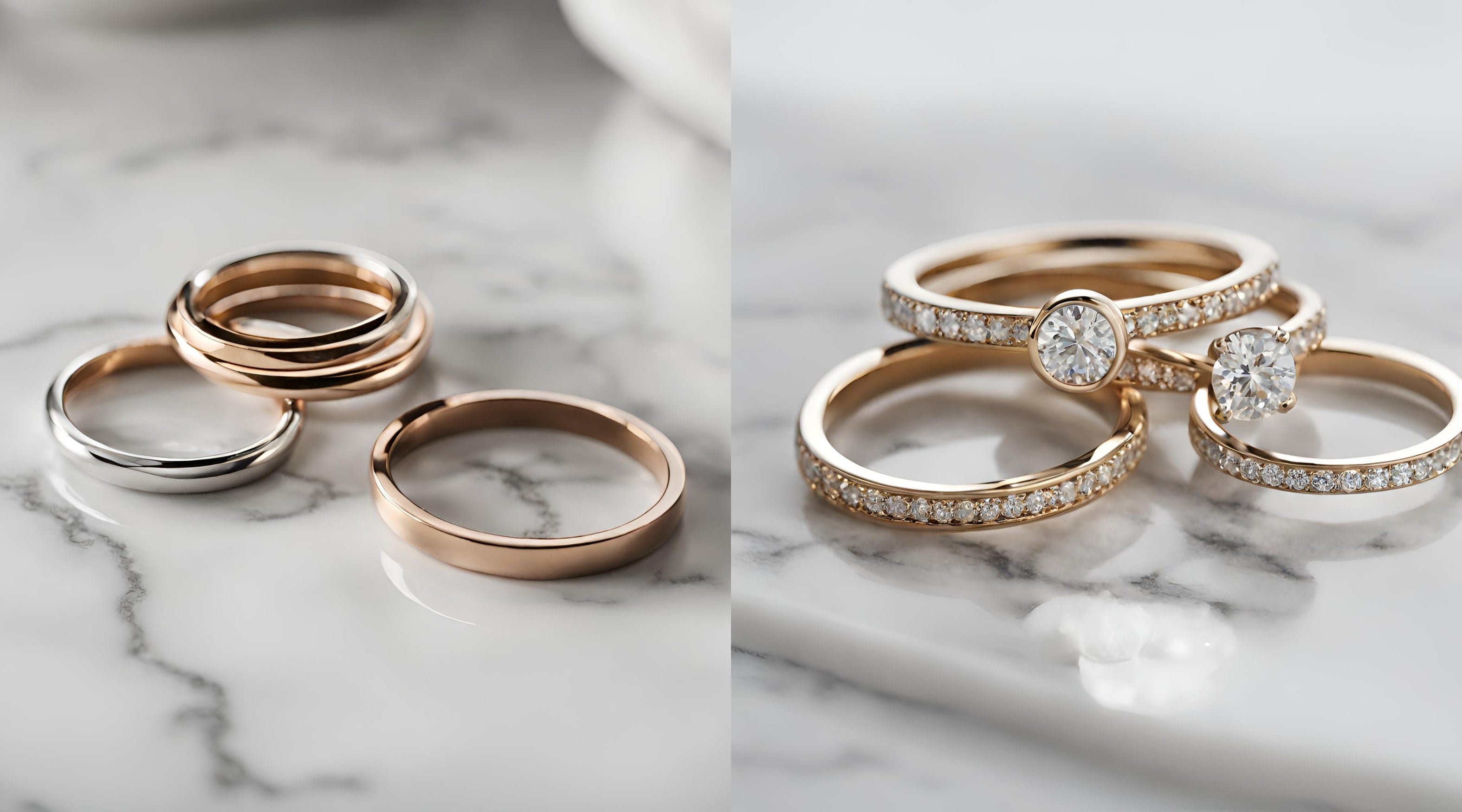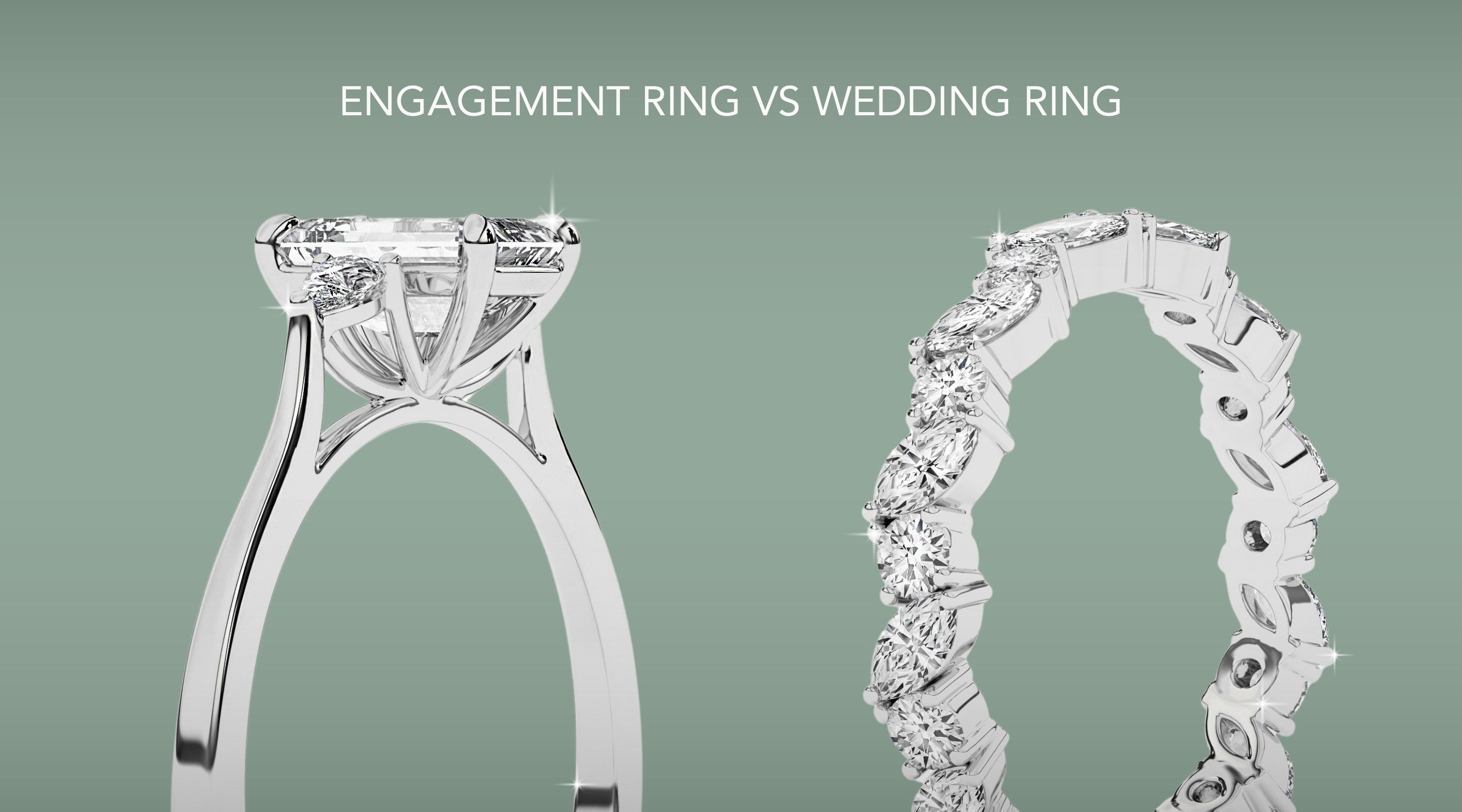
Difference Between Engagement Ring and Wedding Ring
A wedding ring, or, in some cases, an engagement ring, is one of the most valuable pieces of jewelry that symbolizes the journey of a couple. Despite the confusing similarity of their names, these rings have very different uses, appearances, and symbolic significance. If the differences between wedding and engagement rings are realized, couples can select appropriate rings that signify their union. It is now high time to explore their features, history, and guidelines to help select suitable rings. Let’s get started!
Key Takeaways
|
Engagement Rings: A Symbol of Promise
Purpose and Symbolism
It is a tradition that engagement rings are a sign that the couple is planning to get married. When one person decides to pop the question, he or she brings a ring as a symbol of a committed relationship. This tradition marks the beginning of a relationship that leads towards marriage as man and wife.
Occasions and Traditions
- Proposal: The diamond engagement rings are typically tendered during a marriage proposal moment. This can be a secretive act of the person or a very open and public declaration.
- Early Engagement: Engagement rings might also be given once the proposal has been verbally accepted by the woman and symbolize the official beginning of the engagement.
Design Features
Wedding rings are bold and attractive, mostly emphasizing one big stone in the middle, preferably a diamond.
- Centerpiece: Usually, the main attraction of an engagement ring is a large stone in its setting. Diamonds are preferable as they are hard and shiny, but other gems such as sapphires, emeralds, and rubies are also employed.
- Setting Styles: The most common styles of engagement rings are solitaire setting, halo setting, three-stone setting, and pave setting. Every setting style is drastically different aesthetically and in terms of brilliance.
- Band Design: Bands of engagement rings are plain or decorated with other stones and are made of stunning patterns or inscriptions.
Historical Background
This practice of engagement rings can be dated back as early as the 15th century. For example, this tradition is said to have begun when Archduke Maximilian of Austria offered a diamond ring to Mary of Burgundy. Since then, engagement rings have become a significant and precious part of the couple’s story.
Modern Trends
- Customization: Modern engagement rings can come in simple or even heavily embellished designs. This means that the couples have options such as customizing the design they prefer, and they can also pick their preferred stones and even include insignias such as initials on the ring.
- Non-Traditional Choices: More and more people tend to settle for non-conventional engagement rings that can be described as non-standard. This includes rings with colored gemstones, antique rings or rings made from recycled materials, and organic rings.
 |
Wedding Rings: A Symbol of Union
Purpose and Symbolism
Wedding rings represent the legal marriage covenant and a promise to be together for the rest of one’s life. Worn on the ring finger, these rings are often given and received during the wedding ceremony to symbolize the love, companionship, and loyalty of the couple.
Ceremony and Traditions
- Exchange of Rings: This tradition is performed during the wedding ceremony, where the bride and groom exchange rings. This is a public proclamation of their status in the relationship.
- Symbol of Eternity: The circular structure, which has no beginning or end, of the wedding ring represents the couple’s love that will last forever.
Design Features
Wedding bands normally have much fewer embellishments as compared to engagement rings.
- Simplicity: Both male and female engagement and wedding bands are simple rings that are usually plain but can include small diamonds or similar embellishments.
- Materials: The most preferred metals used in wedding rings are gold (yellow, white, and pink), platinum, and silver. These metals are selected because they can endure for many years and remain fashionable.
- Comfort Fit: The wedding rings are worn all the time; hence, the rings have to be comfortable to wear all through. The internal fit is usually smooth and rounded; this is particularly referred to as a comfort fit.
Historical Background
The tradition of the wedding ring is as old as the history of mankind. Ancient people like the Egyptians, Romans, and Greeks used rings mainly made from reeds, leather, or metals when affirming marriage. It had become customary to wear the ring on the fourth finger of the left hand due to the legend that there is a direct line that connects the finger with the heart.
Practicality and Durability
- Everyday Wear: Wedding rings are worn on a daily basis, which means that issues of durability and comfort cannot be overlooked.
- Low Maintenance: Simple designs and sturdy materials ensure that wedding rings require minimal maintenance and can withstand daily activities.
 |
Comparing Engagement Rings and Wedding Rings
To clearly understand the differences between engagement rings and wedding rings, let’s look at a comparison table:
|
Feature |
Engagement Ring |
Wedding Ring |
|
Purpose |
Symbolizes intention to marry |
Symbolizes the union and commitment of marriage |
|
When Given |
During proposal or early engagement |
During the wedding ceremony, |
|
Design |
prominent gemstone, often a diamond |
Simpler design, plain metal band, or minimal diamonds |
|
Cost |
Generally more expensive due to the gemstone |
Usually less expensive |
|
Tradition |
Worn on the fourth finger of the left hand |
Also worn on the fourth finger of the left hand |
Can They Be the Same Ring?
Practicality and Preference
- Single Ring: It is common for couples to utilize the engagement ring as a wedding ring. This approach makes their jewelry collection less complicated and can be less expensive.
- Matching Sets: Some engagement rings are specifically crafted to match a wedding band. This means that these matching sets complement each other perfectly and are suited to each other.
Pros and Cons
Single Ring
- Pros: inexpensive, less maintenance required, easier.
- Cons: It is not as conventional and may appear awkward on some types of engagement rings.
Matching Sets
- Pros: Standard, artsy, meant to interconnect.
- Cons: high cost – more care and attention.
Do Men Wear Engagement Rings?
Evolving Traditions
In the past, engagement rings were only purchased by men for women. But today, trends have changed, and many men also buy engagement rings.
Design Considerations for Men
- Simplicity: Copper men’s engagement rings are often not as elaborate as those for women and may only have plain bands or, at most, simple engravings.
- Materials: Conventional materials such as tungsten, titanium, gold, and platinum are also used.
- Customization: Some varieties of men’s engagement rings are small diamonds, other textures, or engravings.
Social and Cultural Changes
- Equality: The current trend of men sporting engagement rings gives credit to equality in relationships.
- Representation: It also recognizes the efforts and participation of both parties in the engagement process.
Choosing the Right Rings
Considerations for Couples
Selecting the right engagement and wedding rings involves several important considerations:
- Ensure that the rings are well made, of good quality, and of standard workmanship. Make sure to choose trustworthy sellers with positive feedback from other buyers.
- These rings should represent a couple. Therefore, they should embody the tastes of this couple. Some features include design, total metal used, type of metal, and the gemstone used.
- These rings are worn daily; therefore, they should be resilient and non-irritant to the skin. Choose appliances with strong and durable materials and functional finishes.
- Fix your budget and select the rings that are best suited for your spending limit. However, the readers should understand that one can buy beautiful rings at different price levels.
Shopping Tips
- Go to jewelry stores to see what some of these items look like and how they fit you. This assists you in ascertaining the appearance of the rings and the general feel of the rings on hand.
- Consult with a specialist to make a wise decision. A good jeweler is well-equipped to advise you on what options will suit your needs and wallet best.
- Allow enough time for customization and any potential adjustments. Ordering your rings early ensures they are ready for your proposal or wedding.
Conclusion
Understanding the difference between engagement and wedding rings is essential for couples planning their wedding. Engagement rings symbolize the promise of marriage with a focus on the gemstone, while wedding rings represent the union of marriage and are typically more straightforward in design. Whether you choose traditional rings or modern variations, the most important thing is that your rings reflect your love and commitment, making them cherished symbols of your relationship for years to come. You can choose rings that beautifully represent your unique love story by considering personal style, quality, durability, and budget.
FAQs
1. Do you need both an engagement ring and a wedding ring?
No, some couples choose to have just one ring that serves as both the engagement and wedding ring.
2. When do you wear an engagement ring versus a wedding ring?
An engagement ring is worn after the proposal, while the wedding ring is added during the wedding ceremony.
3. Can men wear engagement rings?
Yes, many men now wear engagement rings, especially in same-sex marriages or as a personal choice.
4. Which ring is more expensive, the engagement ring or the wedding ring?
Typically, the engagement ring is more expensive because it usually features a larger gemstone.

